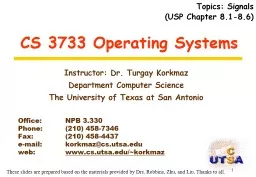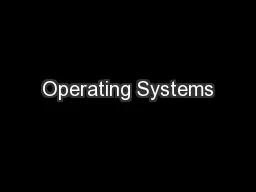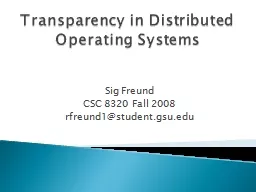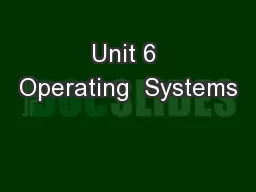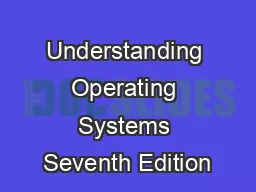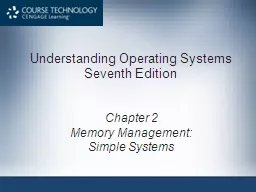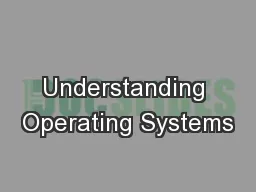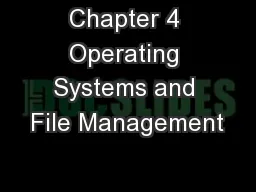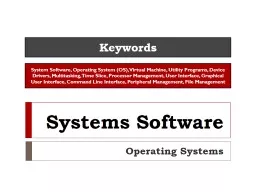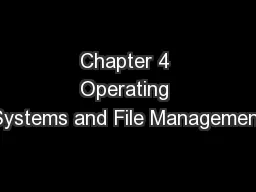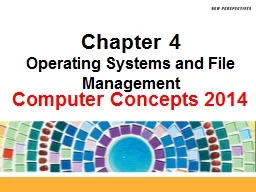PPT-1 CS 3733 Operating Systems
Author : mitsue-stanley | Published Date : 2018-09-21
Instructor Dr Turgay Korkmaz Department Computer Science The University of Texas at San Antonio Office NPB 3330 Phone 210 4587346 Fax 210 4584437 email korkmazcsutsaedu
Presentation Embed Code
Download Presentation
Download Presentation The PPT/PDF document "1 CS 3733 Operating Systems" is the property of its rightful owner. Permission is granted to download and print the materials on this website for personal, non-commercial use only, and to display it on your personal computer provided you do not modify the materials and that you retain all copyright notices contained in the materials. By downloading content from our website, you accept the terms of this agreement.
1 CS 3733 Operating Systems: Transcript
Download Rules Of Document
"1 CS 3733 Operating Systems"The content belongs to its owner. You may download and print it for personal use, without modification, and keep all copyright notices. By downloading, you agree to these terms.
Related Documents

